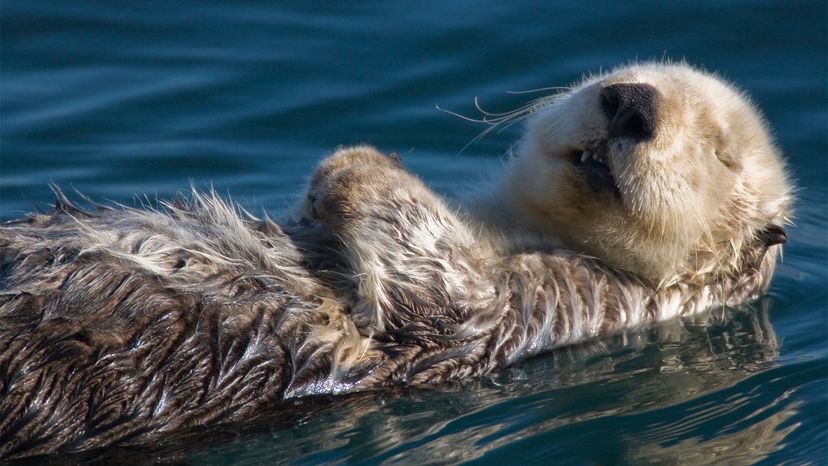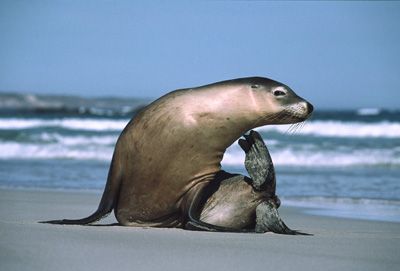One way scientists have helped sea otters make a comeback in California is by pairing orphaned otter babies with captive surrogate moms that can't be released into the wild. For the past 30 years, the Monterey Bay Aquarium has been pairing stranded babies with females in the aquarium's Sea Otter Program, and the experiment has been wildly successful — it turns out, female sea otters are more than happy to raise a baby that's not their own. Since it started in 1984, more than 700 adults and pups have moved through the Sea Otter Program.
"In our latest study we showed that surrogate-reared otters and their offspring account for over half of the population growth in Elkhorn Slough," says Kyle Van Houtan, chief scientist at the Monterey Bay Aquarium. "We're just starting to see the extensive and positive impacts associated with a growing and healthy otter population. Today, many of our state's ecologically degraded estuaries could benefit from sea otters' return. So, while we knew this was a great program and a feel-good story — now we know it's also great science."
There may come a time when you'll see more sea otters frolicking in the waves off the coast of California, but don't get too close:
"Sea otters have been nicknamed 'chainsaws in a burlap bag,'" says Williams. "They have enormously powerful jaws — perfect for cracking the shells of clams and easily breaking fingers. So, as cute as otters look, they can be unpredictable and can deliver a really nasty bite. Give them wide space in the wild."

